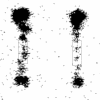The mechanical or electrical induction of medullary angiogenesis: will it improve sternal wound healing?
- PMID: 15745286
- PMCID: PMC548235
The mechanical or electrical induction of medullary angiogenesis: will it improve sternal wound healing?
Abstract
We induced angiogenesis in the tibial medulla and cortex of rabbits by electrical and mechanical stimulation, with the aim of future application to ischemic disease. Sixteen New Zealand rabbits were divided into 4 groups: in Group 1, a K wire was inserted into the medullary channel; in Group 2 a hole was drilled into the tibia; in Group 3, electrical stimulation was applied to the medullary channel; and in Group 4 (the control group), nothing was done. The interventions were applied during a 21-day period, after which all animals were evaluated scintigraphically and histopathologically. All 3 interventional groups were significantly superior to the control group in regard to medullary and cortical vascularity: the P values were 0.021 in all comparisons to control. However, the most fibrotic changes in the medulla occurred in the group that had been treated with electricity (P = 0.008). Slight fibrotic changes occurred in the hole group (P = 0.040), and none occurred in the K-wire group. In sum, all 3 interventions are capable of inducing medullary angiogenesis, but electricity is inferior in regard to fibrotic change. We believe that this present study can establish a baseline for further work that explores clinical applications to problematic ischemic conditions, including delayed sternal wound healing after cardiac surgery.
Figures



Similar articles
-
Induced angiogenesis with intramedullary direct current: experimental research.Am J Physiol Heart Circ Physiol. 2005 Feb;288(2):H705-9. doi: 10.1152/ajpheart.01222.2003. Epub 2004 Oct 7. Am J Physiol Heart Circ Physiol. 2005. PMID: 15471970
-
Cortical bone healing following laser osteotomy using 6.1 microm wavelength.Lasers Surg Med. 2001;29(1):38-43. doi: 10.1002/lsm.1084. Lasers Surg Med. 2001. PMID: 11500861
-
[The control of the effect of the electrical stimulation for the callus formation by means of conductance measurement in the rabbit tibia after osteotomy].Z Exp Chir. 1980 Oct;13(5):290-6. Z Exp Chir. 1980. PMID: 7210758 German.
-
[Behavior of alkaline serum phosphatase (AP) and its bone isoenzyme in healing of the osteotomized tibia in rabbits--an animal experimental study].Z Exp Chir Transplant Kunstliche Organe. 1990;23(4):230-2. Z Exp Chir Transplant Kunstliche Organe. 1990. PMID: 2095652 German.
-
Novel treatment strategy for leg and sternal wound complications after coronary artery bypass graft surgery: bioengineered Apligraf.Ann Thorac Surg. 2004 Aug;78(2):673-8; discussion 678. doi: 10.1016/j.athoracsur.2003.09.032. Ann Thorac Surg. 2004. PMID: 15276544 Review.
Cited by
-
Electrical Stimulation of Wound Healing: A Review of Animal Experimental Evidence.Adv Wound Care (New Rochelle). 2014 Feb 1;3(2):202-218. doi: 10.1089/wound.2012.0409. Adv Wound Care (New Rochelle). 2014. PMID: 24761359 Free PMC article. Review.
-
The future of bone healing.Clin Podiatr Med Surg. 2005 Oct;22(4):631-41. viii. doi: 10.1016/j.cpm.2005.07.002. Clin Podiatr Med Surg. 2005. PMID: 16213385 Free PMC article. Review.
References
-
- Tomanek RJ, Schatteman GC. Angiogenesis: new insights and therapeutic potential. Anat Rec 2000;261:126–35. - PubMed
-
- Hamano K, Li TS, Kobayashi T, Hirata K, Yano M, Kohno M, Matsuzaki M. Therapeutic angiogenesis induced by local autologous bone marrow cell implantation. Ann Thorac Surg 2000;73:1210–5. - PubMed
-
- Zeitani J, Bertoldo F, Bassano C, Penta de Peppo A, Pellegrino A, El Fakhri FM, Chiariello L. Superficial wound dehiscence after median sternotomy: surgical treatment versus secondary wound healing. Ann Thorac Surg 2004;77:672–5. - PubMed
-
- Centofanti P, La Torre M, Barbato L, Verzini A, Patane F, di Summa M. Sternal closure using semirigid fixation with thermoreactive clips. Ann Thorac Surg 2002;74:943–5. - PubMed
-
- Szerafin T, Jaber O, Peterffy A. Reduction of wound healing problems after median sternotomy [letter]. Ann Thorac Surg 1999;68:2388–9. - PubMed
Publication types
MeSH terms
LinkOut - more resources
Full Text Sources
Other Literature Sources
